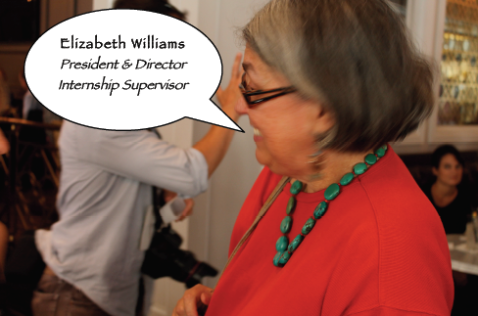WHO… is Southern Food and Beverage Museum?
The Southern Food & Beverage Museum is a non-for-profit organization that aims to circulate an awareness and understanding of the New Orleanian love of food and the South’s rich & intricate culinary culture and history to the rest of our country.
The Organization Offers
Exhibits| Galleries | Stories | Research | Culinary Library| Culinary Archive
WHO … makes up the staff?
The Southern Food & Beverage Museum is primarily run by a staff of 12 people who are as colorful as the Food & Beverage culture that we live among. Their vast variety of education and employment backgrounds contributes to the unique range of focus and spirit exhibited by SoFab’s expeditions and overall character. Among the team is a culinary lawyer and writer, a media producer, an award-winning musician, a filmmaker, a culinary arts expert, a graphic designer, and a former restaurant owner. Additional Staffing and Help includes a team of 5 Special Curators & Researchers, 28 members of the Board of Directors, and 13 members of the Advisory Board. The Advisory Board generates a diverse range of perspectives, from professors to doctors to chefs, including New Orleans’ own bigwig, John Besh.
WHO… do they help?
SoFab educates the city, state, country, and hopefully the world through their collection of artwork, projects, research, stories, news updates, library, and archive, some of which can be accessed on their premises or online.
WHAT… are their missions & goals?
Education about culinary culture offers significant information about world history and the evolution of traditions. The organization maintains the prerogative to educate the largest possible audience about the Southern food and beverage traditions and heritage from the ground up, literally. They cover information about the farmers, fishermen, and hunters & gatherers who contributed to the development and establishment of modern day Southern culinary culture. They cover the diverse ethnological components of Southern food conventions that originated from foreign traditions (such as those of African-Americans, Caribbean, French, and Germans) and have become the very core of the South’s own, elaborate traditions. They also focus on the food & drink culture as it is today, with note of the professional realm that make a living working to not only contribute to the Southern food customs but also keep it afloat and alive. These professionals range from processors to inventors to chefs to business people. They are involved in anything from the management of restaurants, to the circulation of Southern food products nation-wide or cross-continentally, and even to their personal preservation of their own or their family’s recipes that reflect the history of the South’s culinary traditions.
“Celebrate, interpret, investigate, entertain and preserve.”
Specifically, I’ve been helping out with a particular project of the Southern Food and Beverage Museum: the Culinary Heritage Register. This is the first database EVER that works to illuminate and preserve any factor that has contributed to our country’s complex and extensive culinary history and landscape. What makes this Register special is that it will preserve at a level deeper than simply recording historically relevant infrastructure. Instead, the Register will pay homage to “any significant culinary product, process, invention, tradition, and establishment at least 60 years old” that has contributed to America’s identity and that will offer truly valuable insight into its environment, economy, and social structures.
WHERE… is the education spreading?
SoFab has circulated its education about the South nationally and with the launch of the Register, it will expand the historical content it teaches from that which is strictly focusing on the South to that which is emphasizing traditions had across the whole country. Hopefully, with its Internet accessibility, the Southern Food and Beverage Museum will transcend the U.S. borders and educate the world.
WHY…
The issues that the Southern Food & Beverage Museum addresses are far and wide. For one, it serves its primary purpose as an educational, non-profit source of rich history and culture of the South. However, there are community issues related to food that SoFab has adopted into its repertoire of areas in which to raise awareness. For instance, the childhood obesity epidemic is one that the organization addresses. The museum uses its bi-coastal presence (in Washington DC and Los Angeles) to deliver pedagogical speeches to the world about legal and social implications of this issue.
The organization has also taken it upon itself to initiate Cultural Impact Research by creating a website to collect and distribute information concerning the affects of the 2010 Deepwater Horizon Gulf oil spill. In an effort to promulgate the depth of the cultural consequences of the spill, SoFab also created an open forum that welcomes anyone to post relevant data about the spill itself or additional research or projects dedicated to its cause.
HOW… can they afford it?
Funding for SoFab’s exhibits and other efforts primarily comes from donations, memberships, and gift shop sales. However, the staff’s wide range of expertise allows them to also offer lectures in each of their respective fields, for which they charge a fee.
LECTURES
Food, Law, Policy | Cocktail history | Culinary History of New Orleans | Food Museums
HOW … does it apply to me?
Philosophy is instrumental in the way I think, read, write, understand people & appreciate their diverse approaches. I’ve always worked in the hospitality industry: hostessing and restaurant events, PR, & marketing; and I’ve always converged my education with my passion. Specifically, for marketing, I executed my learned persuasive writing & insight into people in order to package the restaurant in a way that’s compelling. Thus, my marketing and development position with SoFab’s Culinary Heritage Register extracts & applies concepts from my major & experiences.








